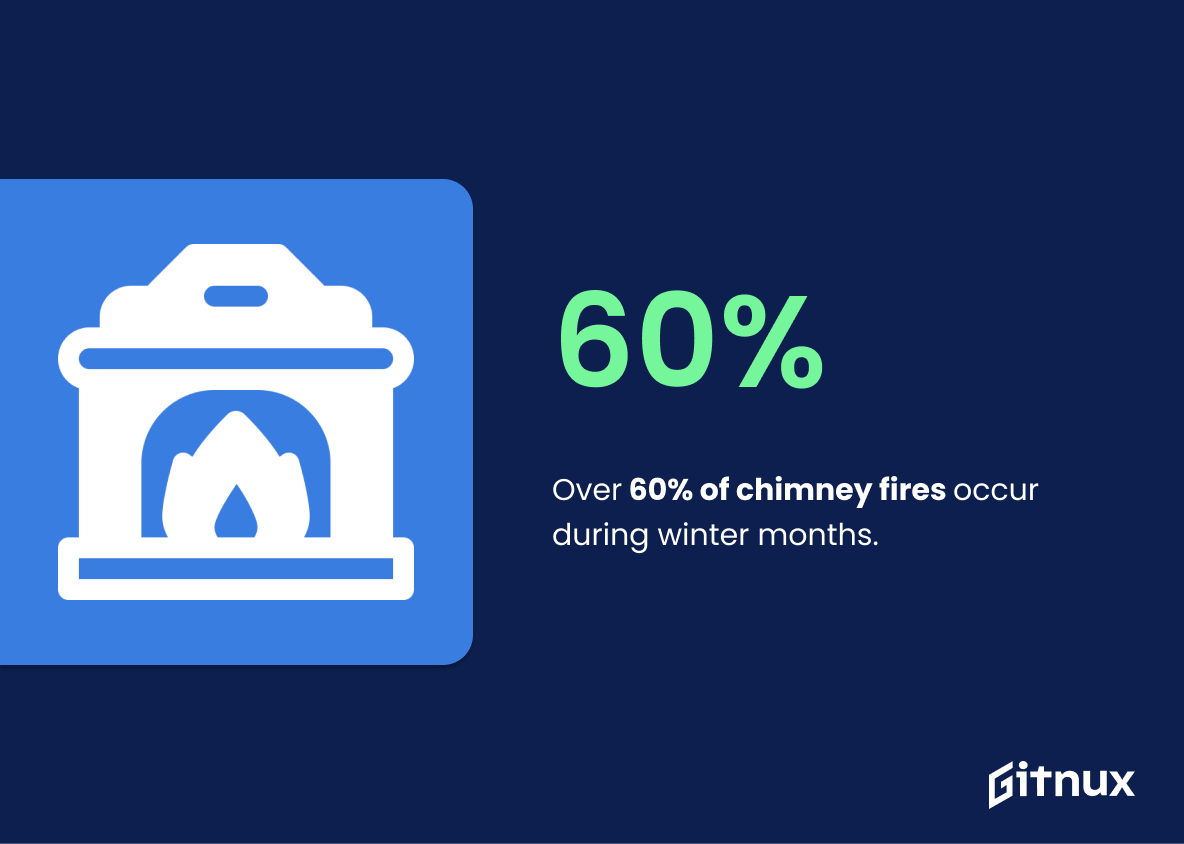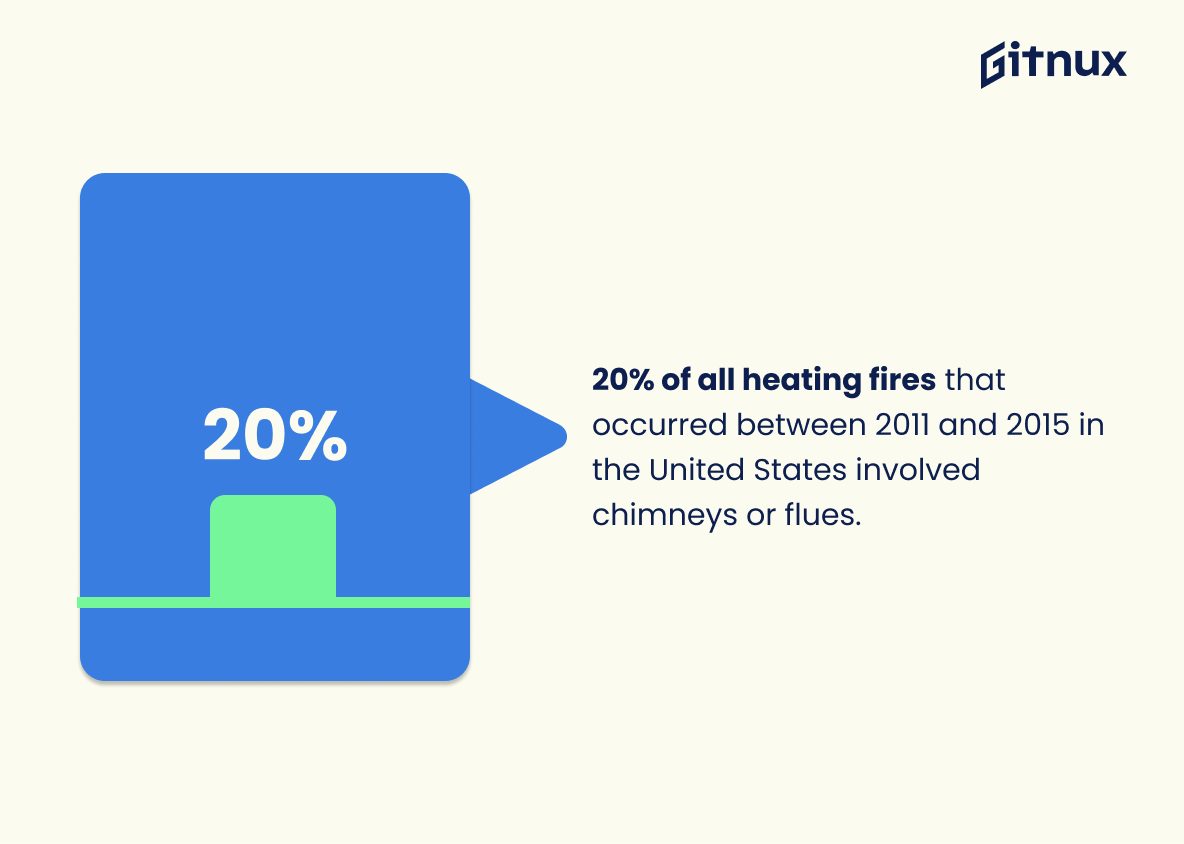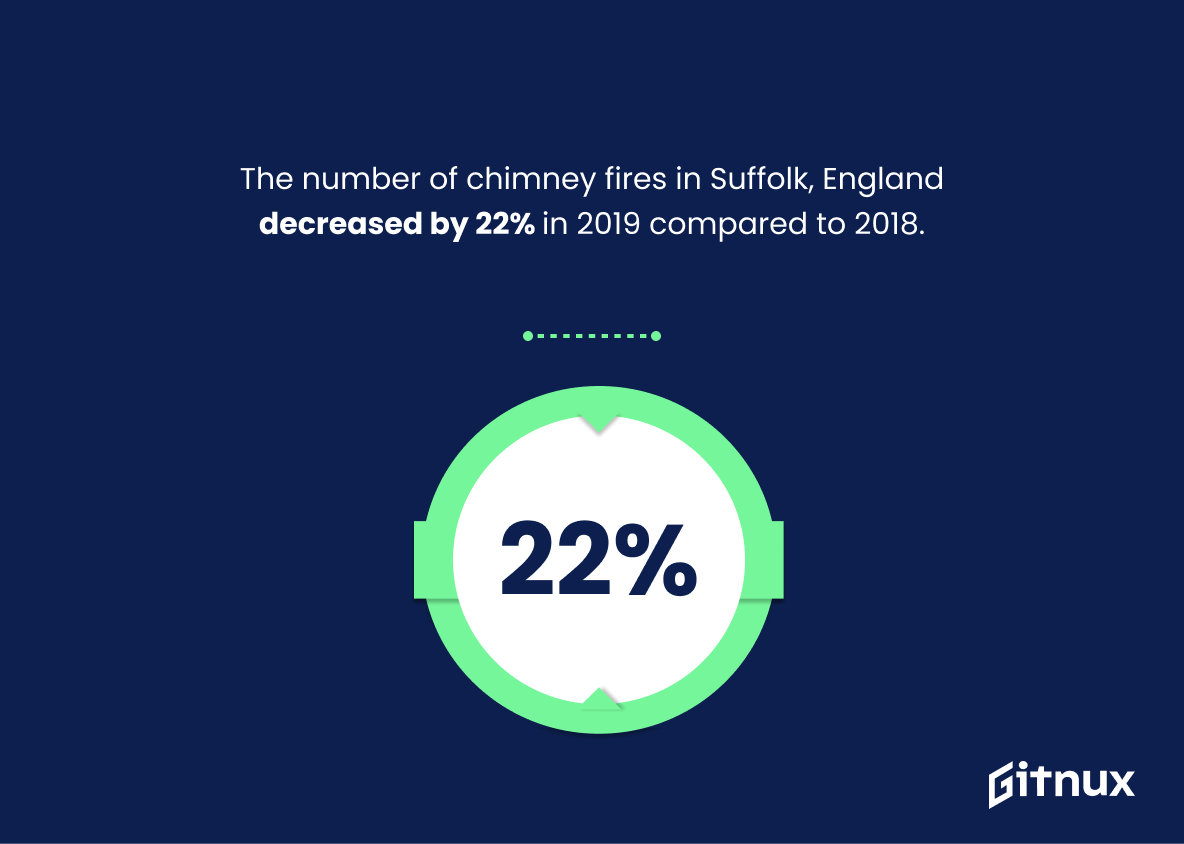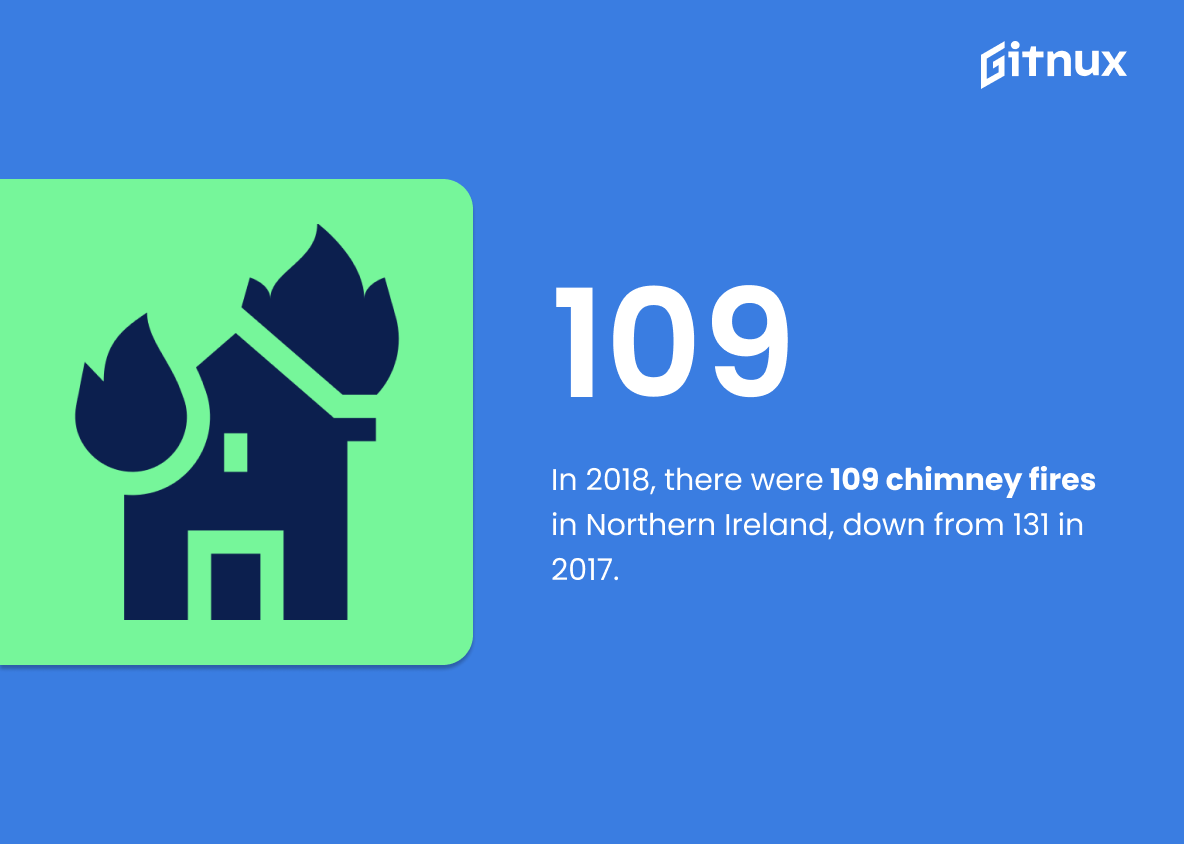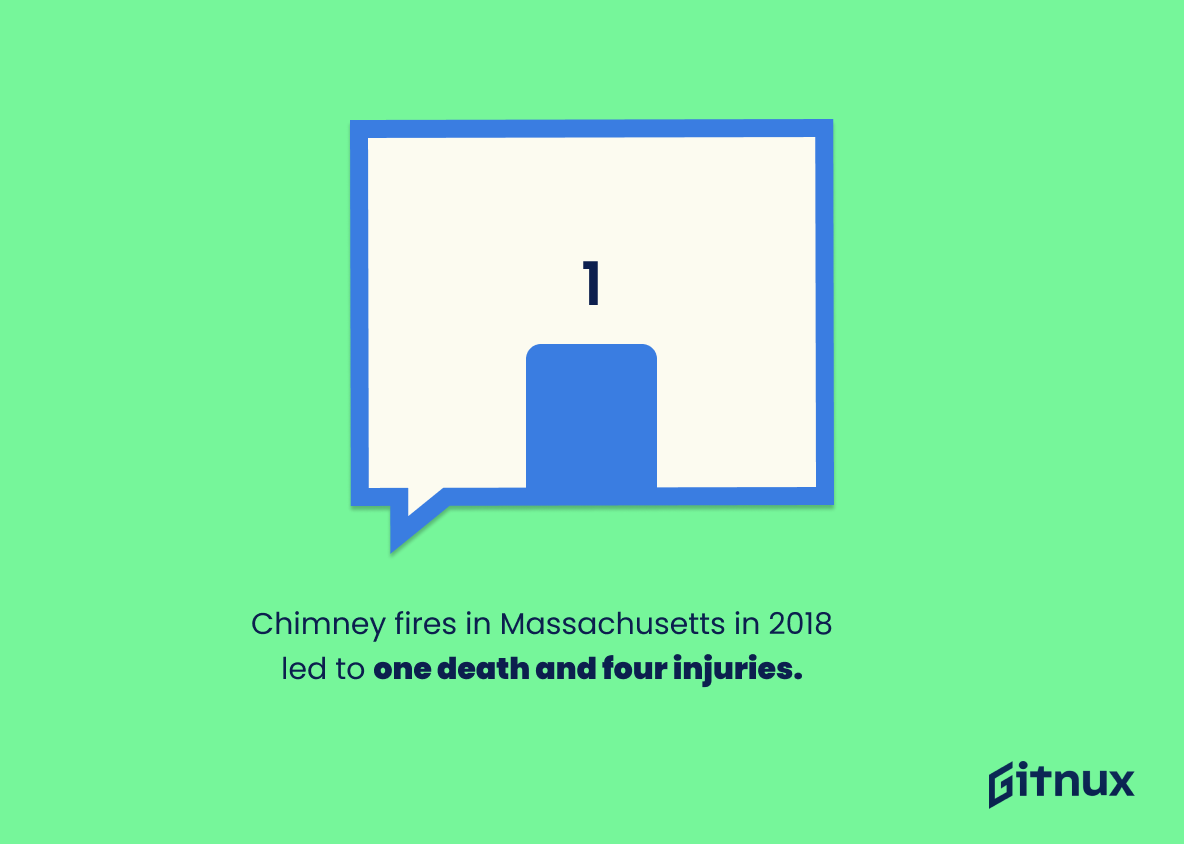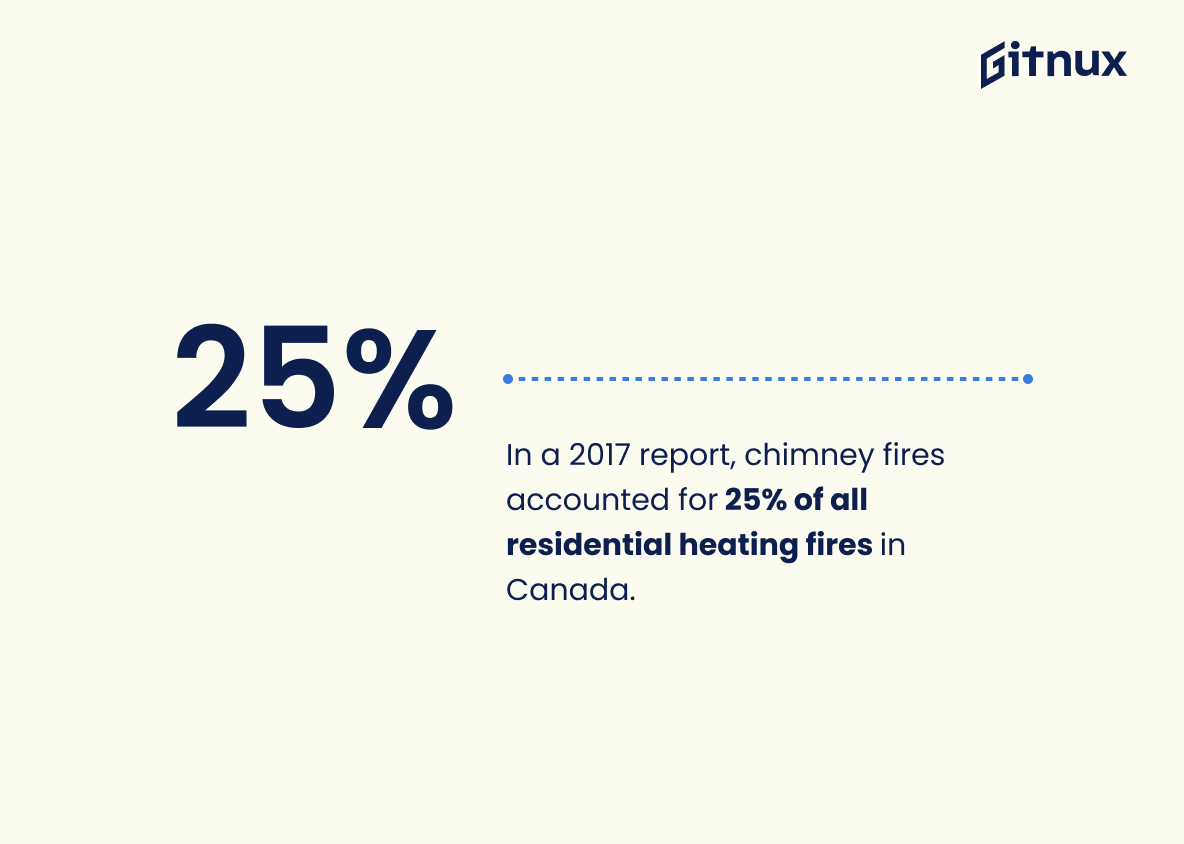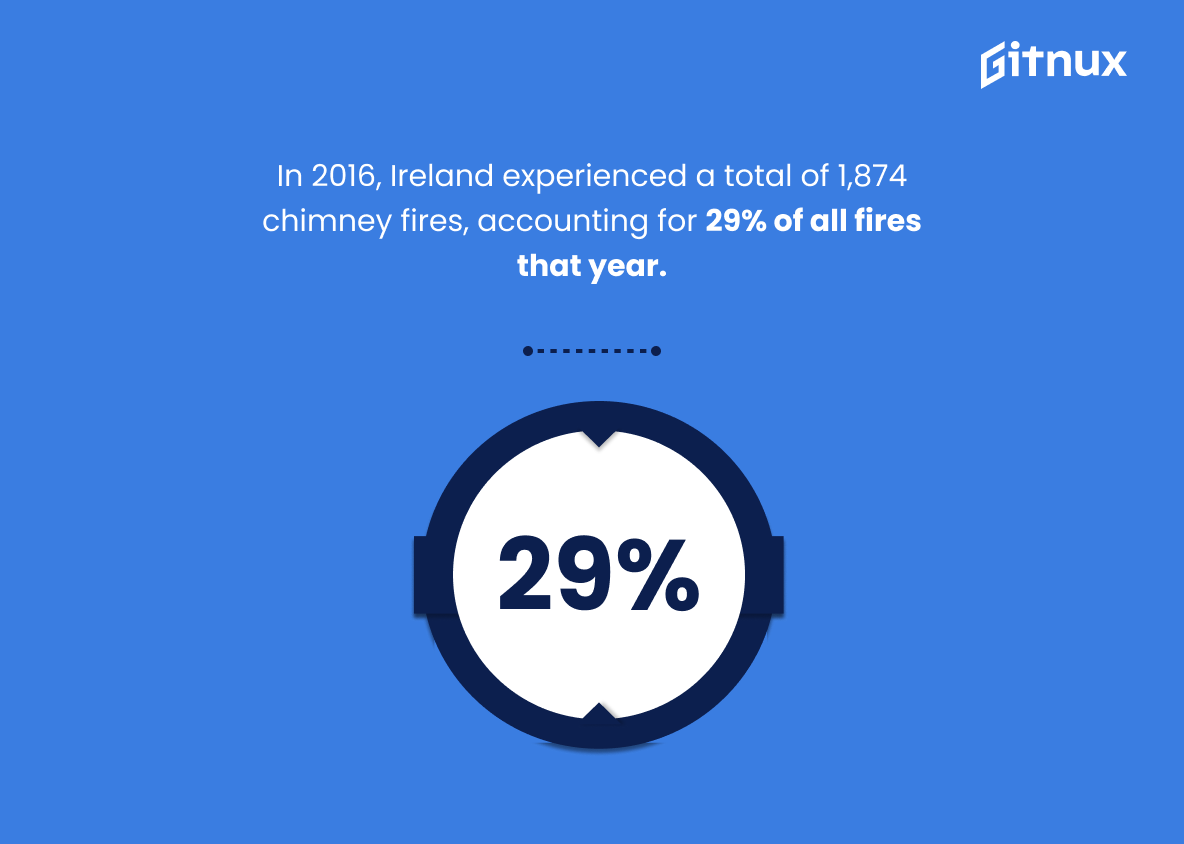Chimney fires are a serious safety hazard that can cause significant property damage and even fatalities. According to statistics, approximately 14,000 chimney fires occur in the United States each year, with around 90% of them caused by creosote build-up. Between 2011 and 2015, 70% of chimney fires were attributed to solid fuel appliances while 5% had an unknown fuel type. Chimney fire related property damage amounts to $120.9 million annually in the US alone; over 60% of these incidents take place during winter months when people use their heating systems more often than usual. In addition, 75 percent of home heating fires involve chimneys or flues according to data from 2011-2015 collected by the U.S Fire Administration (USFA).
In England between 2014 and 2015 there were nine fatalities due to chimney fire as well as 350 non-fatal injuries reported; this translates into one incident every 65 seconds on average for a total number close 7 thousand per year across UK territories combined . Wales has 150 – 200 cases yearly whereas Scotland experienced 25 % increase compared 2018 figures reaching 206 incidents recorded in Hampshire only last year . Northern Ireland saw 63 % decrease since 2010 , dropping from 131 cases registered 2017 down 109 same period next year . Canada’s report shows 25 % residential heating related accidents involving either flue or fireplace while Ireland counted 1 874 such events 2016 representing 29 % all blazes occurred that particular 12 month span .. Finally USA records 62 135 similar occurrences 2018 leading death 4 injured Massachusetts state alone
This statistic is a stark reminder of the potential danger of chimney fires. It highlights the importance of taking the necessary precautions to prevent such fires from occurring in the first place. By understanding the magnitude of the problem, readers can be better informed and take the necessary steps to protect their homes and families.
Around 90% of chimney fires are caused by creosote build-up.
This statistic is a stark reminder of the importance of regularly cleaning and inspecting chimneys to prevent creosote build-up. Without proper maintenance, the risk of a chimney fire increases exponentially, making it essential for homeowners to be aware of the dangers of creosote build-up.
Chimney Fire Statistics Overview
Over 60% of chimney fires occur during winter months.
This statistic is a stark reminder of the importance of chimney maintenance during the winter months. With such a high percentage of chimney fires occurring during this time, it is essential that homeowners take the necessary steps to ensure their chimney is in good condition and free of any potential hazards.
Chimney fires account for 75% of home heating fires.
This statistic is a stark reminder of the importance of proper chimney maintenance. It highlights the fact that chimney fires are a major cause of home heating fires, and that homeowners should take steps to ensure their chimney is regularly inspected and cleaned to reduce the risk of a fire.
In Wales, there are around 150-200 chimney fires each year.
This statistic is a stark reminder of the potential danger of chimney fires in Wales. It highlights the need for homeowners to be aware of the risks and take the necessary precautions to prevent such fires from occurring. It also serves as a warning to those who may be unaware of the potential hazards of chimney fires and the importance of having them regularly inspected and maintained.
20% of all heating fires that occurred between 2011 and 2015 in the United States involved chimneys or flues.
This statistic is a stark reminder of the importance of proper chimney maintenance. It highlights the fact that chimneys and flues are a major source of heating fires in the United States, and that these fires can be prevented with regular inspections and maintenance. This statistic should serve as a warning to homeowners to take the necessary steps to ensure their chimneys are safe and functioning properly.
The number of chimney fires in Suffolk, England decreased by 22% in 2019 compared to 2018.
This statistic is a testament to the success of the fire safety measures implemented in Suffolk, England in 2019. The 22% decrease in chimney fires indicates that the efforts to reduce the risk of chimney fires have been effective, and that the safety of the citizens of Suffolk is being taken seriously. This is an important statistic to consider when discussing chimney fire statistics, as it shows that progress is being made in the fight against chimney fires.
In 2018, there were 109 chimney fires in Northern Ireland, down from 131 in 2017.
This statistic is a clear indication that the efforts to reduce chimney fires in Northern Ireland are paying off. It shows that the number of chimney fires has decreased from 131 in 2017 to 109 in 2018, which is a significant decrease. This is a positive sign that the strategies and initiatives put in place to reduce chimney fires are working and that the public is becoming more aware of the dangers of chimney fires. This statistic is an important reminder that chimney fires are still a serious issue and that we must continue to take steps to reduce them.
Chimney fires in Massachusetts in 2018 led to one death and four injuries.
This statistic is a stark reminder of the potential danger of chimney fires. It highlights the fact that, even in a single year, these fires can have devastating consequences, resulting in the loss of life and serious injury. It serves as a warning to homeowners to take the necessary precautions to ensure their chimneys are properly maintained and inspected.
In a 2017 report, chimney fires accounted for 25% of all residential heating fires in Canada.
This statistic is a stark reminder of the importance of chimney maintenance. It highlights the fact that chimney fires are a significant contributor to residential heating fires in Canada, and that proper maintenance is essential to prevent them.
In 2019, Scotland experienced a 25% increase in chimney fires compared to the previous year.
This statistic is a stark reminder of the dangers of chimney fires. It shows that in 2019, Scotland saw a significant rise in the number of chimney fires compared to the previous year. This highlights the importance of taking the necessary precautions to prevent chimney fires, such as having your chimney regularly inspected and cleaned.
In 2016, Ireland experienced a total of 1,874 chimney fires, accounting for 29% of all fires that year.
This statistic is a stark reminder of the prevalence of chimney fires in Ireland in 2016. It serves to illustrate the magnitude of the issue, with nearly a third of all fires that year being attributed to chimney fires. This highlights the importance of taking the necessary precautions to prevent such fires from occurring.
The number of chimney fires in Northern Ireland decreased by 63% between 2010 and 2018.
This statistic is a testament to the success of the fire safety measures implemented in Northern Ireland over the past decade. It shows that the efforts to reduce the number of chimney fires have been effective, and that the people of Northern Ireland are now safer from the dangers of chimney fires.
Conclusion
Chimney fires are a serious issue that can cause significant property damage and even fatalities. The statistics presented in this blog post demonstrate the prevalence of chimney fires across the United States, England, Wales, Scotland, Ireland and Canada. Approximately 14,000 chimney fires occur each year in the US alone with an estimated $120.9 million dollars worth of property damage annually as a result. Over 90% of these incidents are caused by creosote build-up while solid fuel appliances account for 70%. Chimneys also account for 75% of home heating related fires and over 60% occur during winter months when people use their fireplaces more often than other times throughout the year. In addition to causing numerous residential structure blazes every year around 1 death and 4 injuries were reported due to Massachusetts’ 2018 chimney fire incidents alone; however there has been some progress made towards reducing such occurrences as Northern Ireland experienced 63% fewer between 2010 – 2018 compared to 8 years prior . It is important that homeowners take preventative measures against potential hazards like regular inspections from certified professionals or installing carbon monoxide detectors near any fireplace or wood burning stove within your residence so you can be sure your family stays safe all season long.
References
0. – https://www.fire.nsw.gov.au
1. – https://www.edp24.co.uk
2. – https://www.nifrs.org
3. – https://www.irishnews.com
4. – https://www.doityourself.com
5. – https://www.usfa.fema.gov
6. – https://www.nfpa.org
7. – https://www.irishtimes.com
8. – https://www.mass.gov
9. – https://www.fire-ems-equipment.com
10. – https://www.visitmidwales.co.uk
11. – https://www.quadrafire.com
12. – https://www.news.stv.tv
